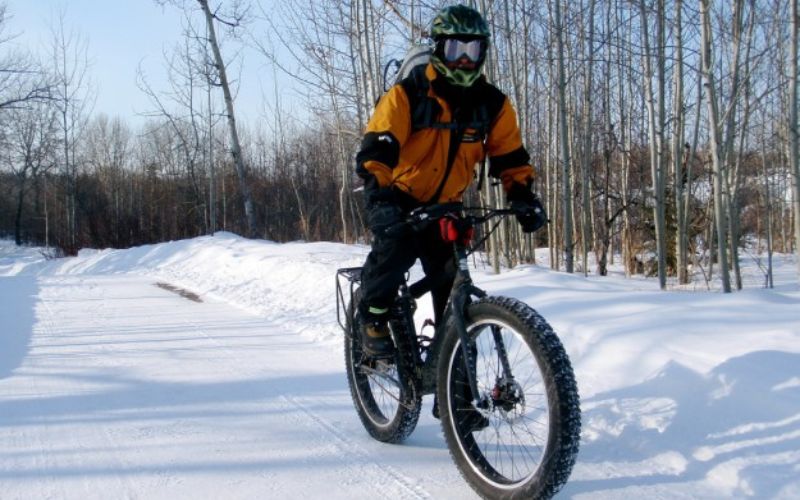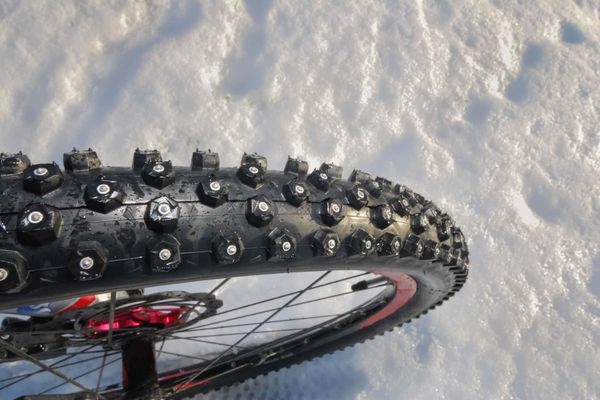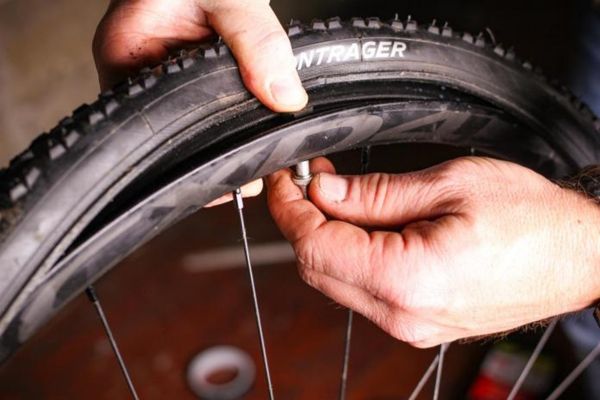The Ultimate Guide to Winter Bike Tires
As the temperatures drop and the roads slick with snow and ice, cyclists must equip themselves with the right gear for winter riding. One of the essential pieces of equipment is a set of winter bike tires. In this ultimate guide, we’ll cover everything you need to know about winter bike tires and why you need them. We will provide advice on how to choose and maintain them.
Contents
- 1 Why You Need Winter Bike Tires
- 2 How Winter Tires Can Improve Your Riding Experience
- 3 Types of Winter Bike Tires
- 4 Factors to Consider When Choosing Winter Bike Tires
- 5 Tips for Using and Maintaining Winter Bike
- 6 Top Winter Bike Tires on the Market
- 7 Pros and Cons of Each Tire Option
- 8 Recommendations Based on Your Riding Style and Conditions
- 9 FAQ
- 9.1 1. What is the difference between studded and non-studded winter bike tires?
- 9.2 2. Can I use regular bike tires in the winter?
- 9.3 3. How do I choose the right size of winter bike tire?
- 9.4 4. Do I need to change the air pressure in my winter bike tires?
- 9.5 5. How often should I replace my winter bike tires?
Why You Need Winter Bike Tires

You know how treacherous it can be if you’ve ever tried riding your bike on snow or ice with regular tires. Regular tires are not designed for winter conditions, which can result in poor traction. It may cause decreased stability and a higher risk of accidents. On the other hand, winter bike tires are specifically engineered to provide better grip and control in cold and wet conditions.
How Winter Tires Can Improve Your Riding Experience
With the right winter bike tires, you can continue riding even in the coldest and snowiest months of the year. You’ll have greater confidence and control on the road and are less likely to slide or skid. Plus, with the added traction, you can ride faster and more efficiently without extra effort.
Types of Winter Bike Tires
There are multiple winter bike tires available in the market. Such as-
Studded Tires

Studded tires are the most common type of winter bike tire and for a good reason. These tires feature small metal studs embedded in the tread to provide extra grip and traction on icy surfaces. They work exceptionally well on packed snow and ice but can be noisier and slower on clear roads.
Non-Studded Tires

Non-studded tires are a good option if you’re looking for a more versatile winter tire. These tires have a specially designed tread pattern that can grip slippery surfaces without needing metal studs. They’re generally quieter and faster than studded tires but may be less effective on extremely icy roads.
Tubeless Tires

Tubeless tires are becoming increasingly popular for winter riding as they offer several advantages over traditional tires. They are less prone to punctures, which is especially important when riding on rough winter roads. They also allow for lower tire pressure, increasing grip, and comfort. However, they may require more maintenance and setup than other winter tires.
Factors to Consider When Choosing Winter Bike Tires
You may consider these factors while choosing your winter bike tires for a safe ride in winter-
Tire Width and Diameter
The width and diameter of your winter bike tires can significantly impact their performance. Generally, wider tires are better for winter riding, providing more surface area for grip and stability. However, you’ll also want to ensure your tires are compatible with your bike frame and fork.
Tread Pattern and Depth
The tread pattern and depth of your winter bike tires are also important considerations. Look for tires with deep, aggressive tread patterns that can dig into snow and ice. You’ll also want to ensure the tread is spaced out enough to prevent snow from packing and clogging the tire.
Puncture Resistance and Durability
Winter roads can be harsh on tires, so choosing a tire that can handle the conditions is essential. Look for tires with puncture-resistant materials and thick sidewalls that can withstand the wear and tear of winter riding. Consider the durability of the tire’s tread, as some winter tires can wear down more quickly than others.
Compatibility with Your Bike
Finally, you’ll want to ensure your winter bike tires are compatible with your bike’s wheel size and brake system. Check the manufacturer’s specifications before purchasing to ensure a proper fit.
Tips for Using and Maintaining Winter Bike

Here are some tips for using and maintaining your winter bike tires:
How to Install and Remove Winter Tires
Installing and removing winter bike tires can be more challenging than regular tires, especially if you’re using studded tires. You’ll want to ensure you have the right tools, such as tire levers and a pump, and take your time to avoid damaging the tire or tube. It can be helpful to practice changing a tire at home before doing it on the road.
How to Inflate and Deflate Winter Tires
Inflating and deflating your winter bike tires can be trickier than regular tires, as the cold weather can affect tire pressure. You’ll want to keep an eye on the pressure and adjust as necessary, using a gauge or your fingers to check the firmness of the tire. Be careful not to overinflate or underinflate the tire. Otherwise, this can affect its performance and durability.
How to Store and Clean Winter Tires
When you’re not using your winter bike tires, storing them is essential to prevent damage and deterioration. Please keep them in a cool, dry place, away from direct sunlight and moisture. Clean them periodically to remove debris or salt that can build up on the tread and damage the tire.
Top Winter Bike Tires on the Market
There are many different brands and models of winter bike tires on the market, each with its strengths and weaknesses. Some popular options include the Schwalbe Marathon Winter, the Continental Top Contact Winter II, and the Nokian Hakkapeliitta W106. Research the options available and read reviews from other cyclists to find the best winter bike tires.
Pros and Cons of Each Tire Option
Each type of winter bike tire has its pros and cons, depending on your riding style and conditions. For example, studded tires provide excellent grip on ice and packed snow but can be slower and noisier on clear roads. Non-studded tires are more versatile and faster but may not perform as well on highly icy surfaces. Consider the trade-offs and choose the tire that best fits your needs.
Recommendations Based on Your Riding Style and Conditions

Finally, choosing a winter bike tire that is appropriate for your specific riding style and conditions is essential. Studded tires may be your best bet if you live in an area with frequent snow and ice. If you ride on a mix of surfaces, non-studded tires may be more versatile. Talk to other cyclists or bike shop experts to get personalized recommendations for your needs.
In conclusion, winter bike tires are an essential piece of equipment for safe and enjoyable winter riding. By choosing the right type of tire and taking good care of it, you can ride with confidence and comfort all season long.
Read Also: Best Men’s Mountain Biking Pants for Winter
FAQ
1. What is the difference between studded and non-studded winter bike tires?
Answer: Studded winter bike tires have metal studs embedded in the tire tread to improve traction on icy surfaces, while non-studded tires rely on specialized rubber compounds to provide grip.
2. Can I use regular bike tires in the winter?
Answer: While you technically can use regular bike tires in the winter, they are not optimized for cold or snowy conditions and may not provide adequate grip or traction.
3. How do I choose the right size of winter bike tire?
Answer: Check the size of your existing bike tires and choose a compatible winter tire; some popular measures include 700x35c and 26×2.1.
4. Do I need to change the air pressure in my winter bike tires?
Answer: You can reduce the air pressure in your winter bike tires to increase surface area and provide better traction on snowy or icy surfaces. Consult your tire manufacturer’s recommendations for specific guidance.
5. How often should I replace my winter bike tires?
Answer: The lifespan of a winter bike tire will depend on factors such as frequency of use and road conditions. However, it’s generally recommended to replace your winter bike tires every 1-3 years for optimal performance.


